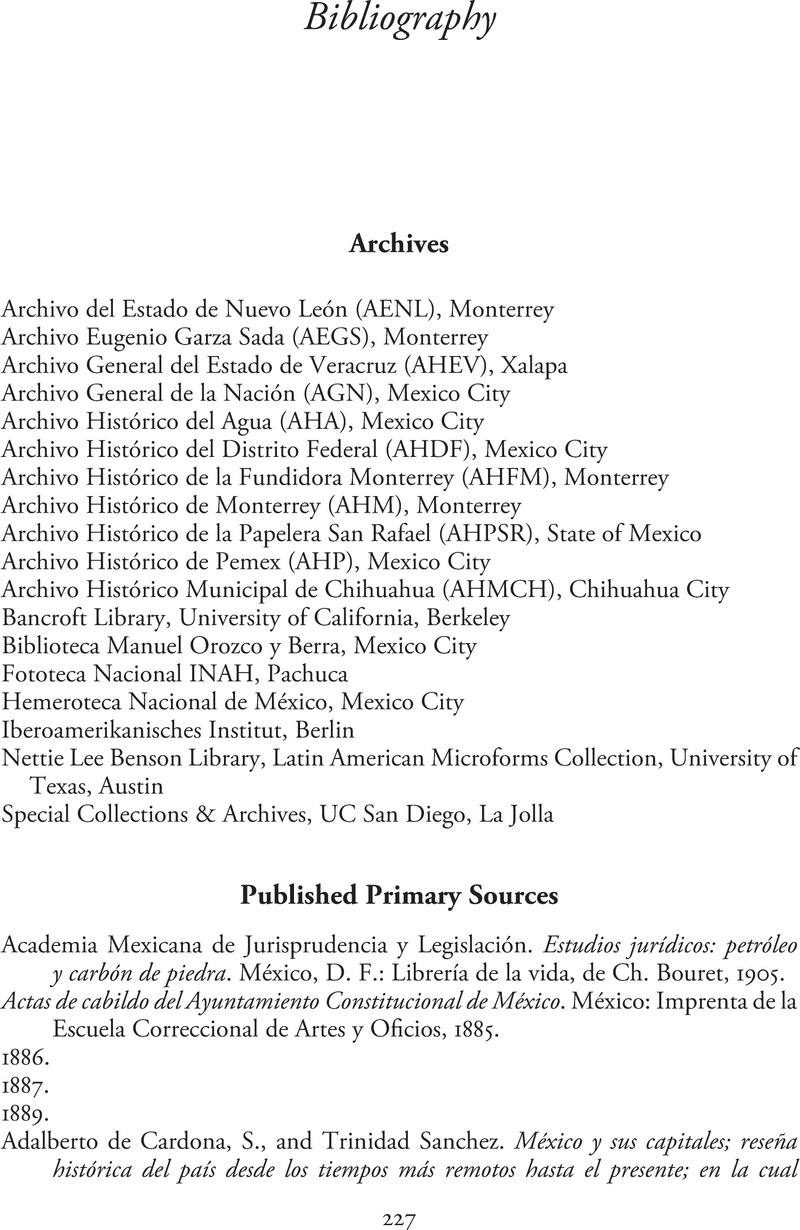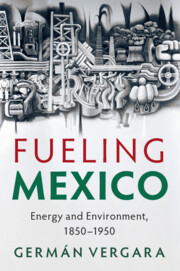Book contents
- Fueling Mexico
- Studies in Environment and History
- Fueling Mexico
- Copyright page
- Contents
- Figures and Tables
- Acknowledgments
- Introduction Energy, Environment, and History
- Chapter 1 1850s: Solar Society
- Chapter 2 The Nature of Capitalist Growth
- Chapter 3 Searching for Rocks
- Chapter 4 The Other Revolution
- Chapter 5 1950s: Fossil-Fueled Society
- Conclusion
- Bibliography
- Index
- References
Bibliography
Published online by Cambridge University Press: 11 June 2021
- Fueling Mexico
- Studies in Environment and History
- Fueling Mexico
- Copyright page
- Contents
- Figures and Tables
- Acknowledgments
- Introduction Energy, Environment, and History
- Chapter 1 1850s: Solar Society
- Chapter 2 The Nature of Capitalist Growth
- Chapter 3 Searching for Rocks
- Chapter 4 The Other Revolution
- Chapter 5 1950s: Fossil-Fueled Society
- Conclusion
- Bibliography
- Index
- References
Summary

- Type
- Chapter
- Information
- Fueling MexicoEnergy and Environment, 1850–1950, pp. 227 - 298Publisher: Cambridge University PressPrint publication year: 2021

